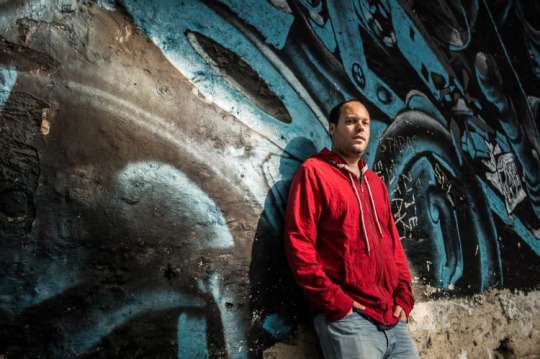CENTRAL STATION is one of the Best New Science Fiction Books of the Year (So Far)

Photo: Kevin Nixon. © Future Publishing 2013
Joel Cunningham on the B&N SCI-FI & FANTASY BLOG includes Lavie Tidhar’s dazzling, unsettling vision of the future CENTRAL STATION in his listing of The Best New Science Fiction & Fantasy Books of the Year (So Far).
Tidhar’s second novel out in the U.S. this year, following the pitch-black Adolf Hitler satire A MAN LIES DREAMING, couldn’t be more different: this strange take on space opera is a classic “fix-up,” strung together from a double-handful of previously published short stories exploring the lives of the inhabitants of a slum situated below Central Station, the hub of humanity’s future and a gateway to contact with the Others, an alien force that is changing the future of humanity. On the ground, in a border town between Tel Aviv and Jaffa, genetically engineered children experience a different sort of reality, cyborg couriers deliver drugs, and robotic priests speak to the faithful. It’s a dazzling, unsettling vision of the future from one of the most consistently interesting—and challenging—voices in the genre.

For THE REPORTER GROUP, Rabbi Rachel Esserman praises the book.
Some novels straddle the line between fantasy and science fiction. That’s true of Lavie Tidhar’s “Central Station” (Tachyon Publications), which is set in a Tel Aviv of the future. In this world, most of the universe’s population is connected into “the conversation” – a type of Internet that interfaces with people’s brains. Cyborg robotiks, who were created from dying soldiers, now have few memories of the humans they once were. There is also a group of children whose existence is part magic and part science.
“Central Station” works best as a collection of interrelated stories rather than a cohesive novel. One reoccurring character is Boris Chang, who has returned from space after years of trying to escape a family curse. Once in Tel Aviv, he meets an ex-lover, now known as Mama Jones, who runs a type of café/bar and has adopted an orphan with an unusual gift. Other characters include Motl, a robotik who has fallen in love with a human, and Carmel, a data vampire whose bite drains people of their memories and their lives. Parts of the overarching plot focus on why Carmel has been allowed to settle on Earth, a place vampires are forbidden entry.
While “Central Station” is a fantasy, Tidhar seems less concerned with creating a cohesive alternative world than with telling the stories of the humans and almost humans who populate it. All his characters are searching for something beyond themselves, whether it’s spiritual satisfaction or love. Although the narrative doesn’t answer all of the questions it raises, those who enjoy pondering metaphysical mysteries will lose themselves in its pages.

POSITRON CHICAGO offers notes from the Chicago Nerd Social Club June reading of CENTRAL STATION.
Lots of praise for the writing in “Central Station”, perhaps the more so after slogging through last month’s selection. We really liked the characterization here, and the way that Tidhar conveys really human stories and a deep sense of place by making these sort of thin slices of description across an interwoven cast.
<snip>
However, a lot of us liked the “let’s just see how life is like there” approach. We were fascinated by each character and segment, from the religious robots and data-vampires to the very human inheritors of Weiwei’s Folly. We particularly liked that ethnic history feels realized here–characters’ cultural heritages are actually fleshed out. We talked for a bit about how, in addition to not having some save-the-universe plot, it’s also neither a utopia nor a dystopia, it’s just a place with people living their lives, which is unusually realistic. And we wondered why SF has generally been uncomfortable with examining the “small lives of quite desperation” of normal folks–why that tends to be left to “literary” fiction.

It’s also pretty impressive how Tidhar layers SF references without hanging textual impact on them (unlike something like “Ready Player One”, for instance). You don’t need to know that Carmel’s story is an homage to C.L. Moore’s “Shambleau” for it to work…but it’s a nice extra if you do. Likewise the Burroughs-inspired Martians, or the use of “ubik” as a verb. Even the sneaky inclusion of Scientologists as “Elronites” seems like a reminder of the kind of pulpy SF L. Ron Hubbard wrote.
<snip>
Really a delightful discussion, and personally I can’t suggest “Central Station” enough. A change of pace, a change of place, with a real mix of styles here–horror, SF, comedy, pastoral. The overall impression I get from the book is a surprising kind of gentleness that is all too rare in SF/F–gentle without being precious–and acts as a kind of framing to highlight some really nice moments of wonder.
For more info about CENTRAL STATION, visit the Tachyon page.
Cover and poster by Sarah Anne Langton
